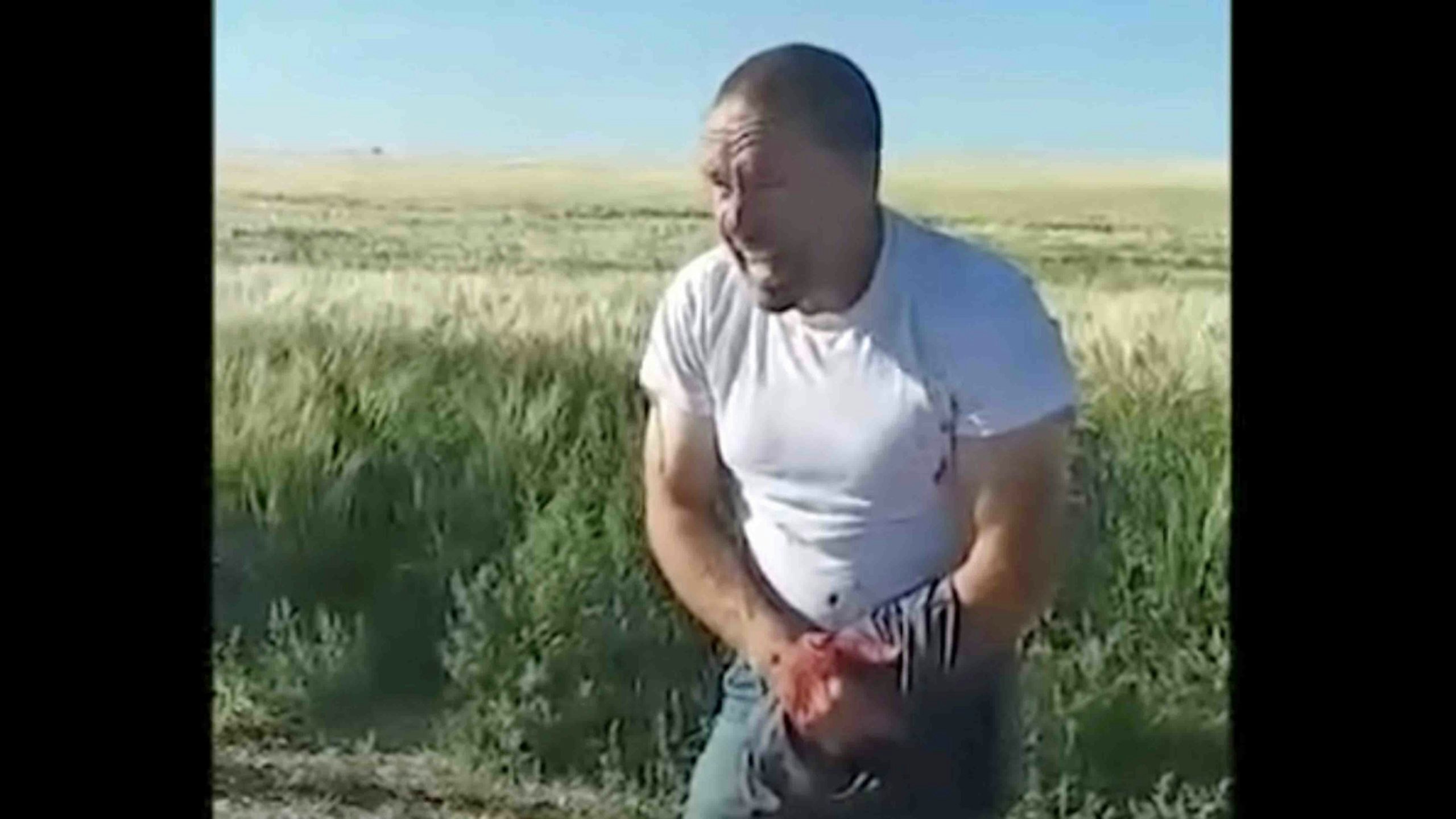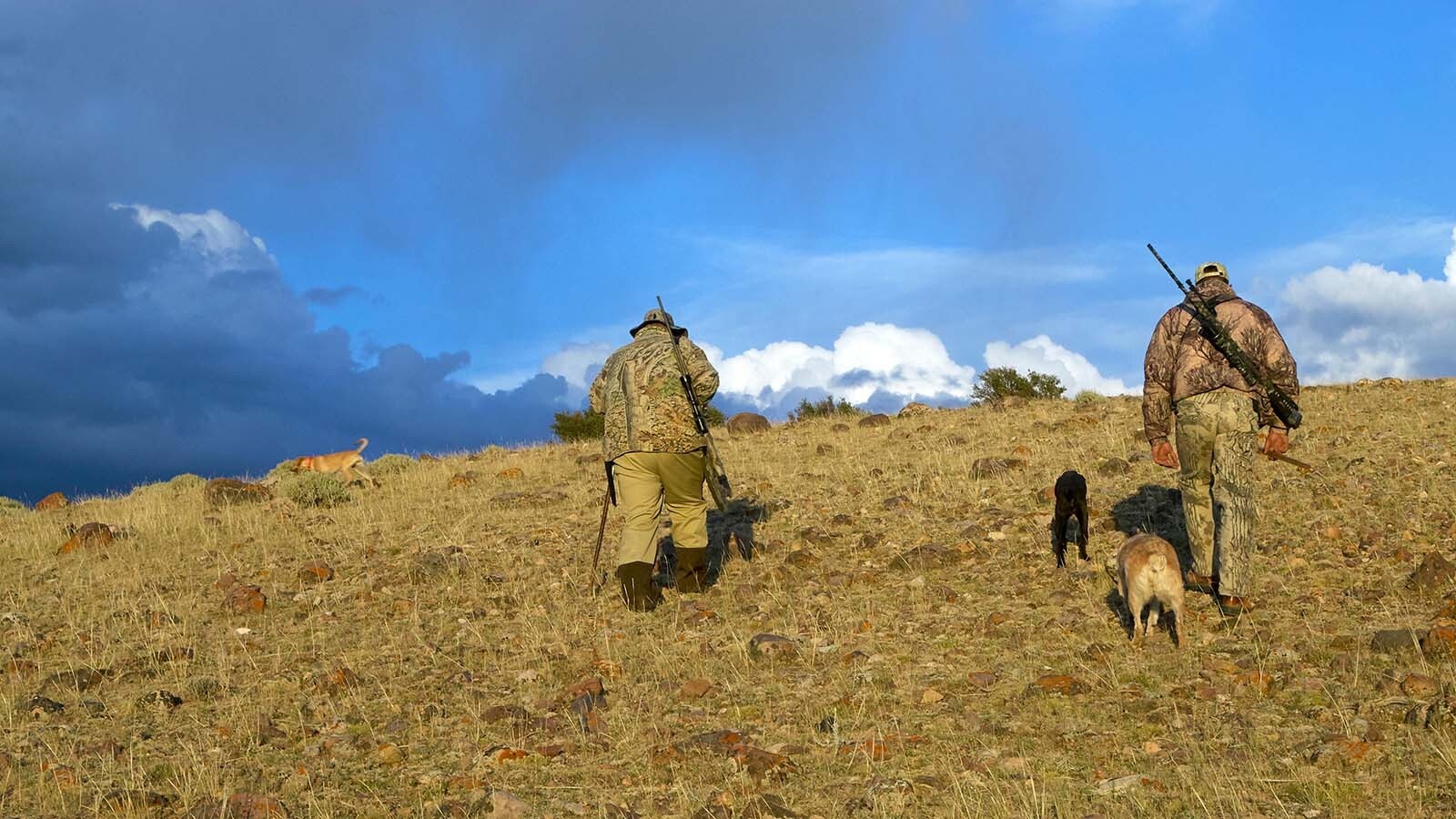Shanun Rammell and his wife had chased the grizzly off of their property twice in a yearlong span before the attack.
And after the attack, Rammell is convinced the bears don’t need the protection afforded by the Endangered Species Act.
“You get a lot of people who think these are cute, cuddly teddy bears, but they’re apex killing machines,” he told Cowboy State Daily.
“This is a problem and (the U.S. Fish and Wildlife Service) are here to protect the bears at all costs,” he continued. “This isn’t a grizzly’s habitat anymore.”
The Montana native lives in a secluded area of Choteau, Montana. When he got a tip from a neighbor last summer that the bear was back on his land a third time, he went looking for it.
He confronted the bear in an abandoned shed on his property, and thankfully lived to tell the tale, something not every person who encounters a grizzly can attest to.
The bear threw him around like a ragdoll, all while his wife and one of his 10 children were watching.
His wife, Jamie Rammell, tried to run over the bear with their vehicle, but it ran off when it heard the engine turn over.
Nine days later, the bear returned, coming close to attacking one of Rammell’s daughters.
“I was in a Fish and Game truck after the bear attacked my daughter and they wouldn’t kill the bear,” Rammell said. “He’s still out, wandering around. I haven’t seen him, but one of my neighbors saw him around Thanksgiving.”
The attack on Rammell was one of the few bear attacks to take place in far-eastern Montana in more than 100 years.
For nearly a year, Rammell has been working with Montana legislators to help get the grizzly bear taken off the endangered species list, noting how the species is no longer threatened and is actually found in abundance in the region.
“There’s just way too many of them,” he said. “When they’re cruising 50 miles away in the prairie, there’s a problem. All they do now is kill cattle and sheep and tear barn doors off to get to grains.”
Many Wyoming officials agree with Rammell about delisting grizzlies, but they probably haven’t been as close to a grizzly’s claws as he has.
Last week, the U.S. Fish and Wildlife Service recommended that no change be made to the to the grizzlies’ status as threatened under the Endangered Species Act for at least five years.
But Wyoming officials maintain the recommendation is not based in the reality of what is happening with the bears in the Greater Yellowstone ecosystem.
“The Greater Yellowstone Ecosystem bear population is booming, growing from as few as 136 bears during early recovery periods to potentially more than 1,000 in the ecosystem today,” said Brian Nesvik, director of the Wyoming Game and Fish Department.
The Fish and Wildlife Service’s recommendation to leave the bears on the list came after a thorough review of the best available science, the agency said in a statement, which was informed by an independently peer-review species status assessment.
The recommendation did confirm that grizzly populations in the Greater Yellowstone and Northern Continental Divide ecosystems are biologically recovered. However, the five-year status review would allow for assessment of the species as a whole across the 48 contiguous states.
The assessment will evaluate the species’ current needs, conditions and threats, as well as modeling future scenarios. The remaining challenges with their threatened status include limited habitat connectivity, management of access by motorized vehicles, human-caused mortality and uncertainty surrounding future conservation efforts in some ecosystems, according to the Fish and Wildlife Service.
Grizzlies were originally listed as threatened in 1975 and then removed from the endangered species list in 2017 by the Fish and Wildlife Service, which cited a significant increase in bear populations.
However, in 2018, a federal court reversed the agency’s decision.
Rammell called the decision to keep the grizzlies on the endangered species list “all politics.”
He has seen the damage that has been done to the species by trying to keep them on the threatened list (such as overpopulation and a lack of food), and believes states need to manage the bear population.
“It’s all about who you know,” he said. “My daughter is still having nightmares about the attack.”





